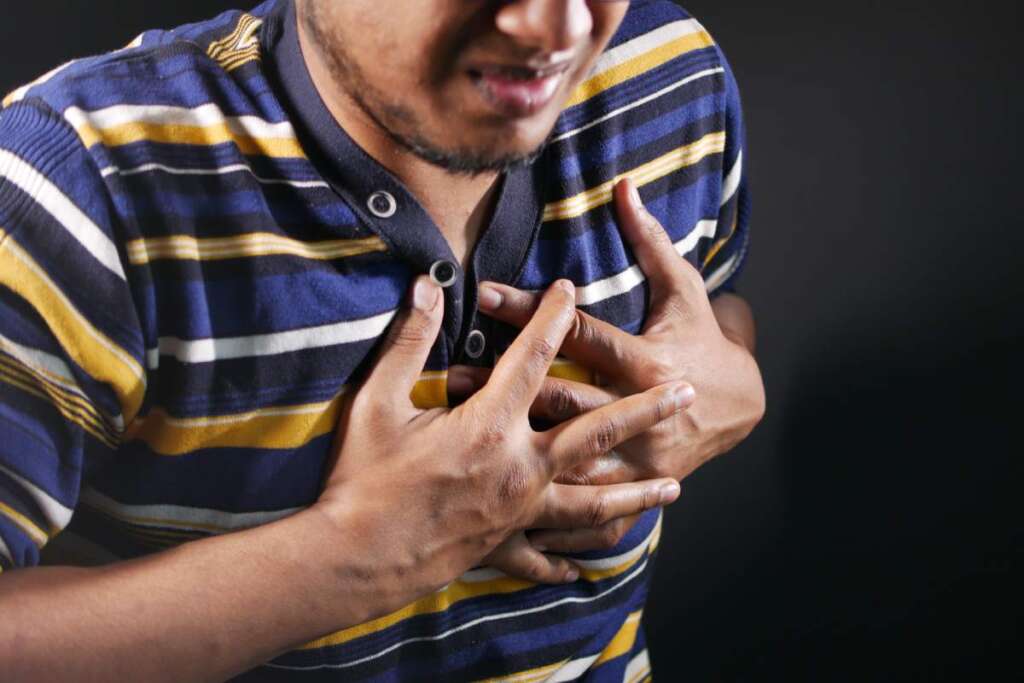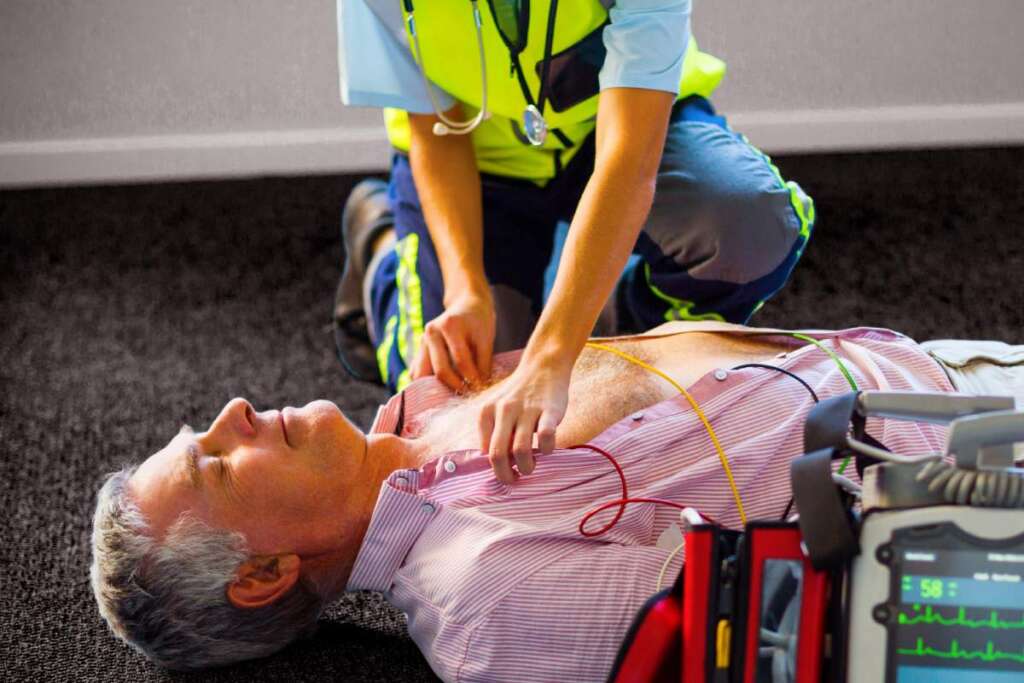Understanding the difference between cardiac arrest and a heart attack is crucial, especially when discussing heart health. While these terms are often used interchangeably, they refer to distinct medical conditions. Both can be life-threatening, but they involve different mechanisms within the heart and require unique treatments.
Let’s break down these two conditions to understand their causes, symptoms, treatments, and prevention.
What Is a Heart Attack?
A heart attack, medically known as a myocardial infarction, occurs when blood flow to a part of the heart muscle is blocked. The heart muscle requires a constant supply of oxygen-rich blood, which is delivered by the coronary arteries. When these arteries become blocked due to a build-up of plaque (cholesterol, fat, and other substances), the heart is deprived of oxygen. If the blockage is not cleared quickly, the part of the heart muscle supplied by the affected artery can become damaged or die.

Causes of a Heart Attack
Most heart attacks are caused by coronary artery disease (CAD), where the coronary arteries become narrow or blocked by plaque. In some cases, the plaque can rupture, leading to the formation of a blood clot that can block the artery. Other causes include:
- Spasm of a coronary artery, which can temporarily reduce or block blood flow.
- Tear in the coronary artery wall, leading to restricted blood flow.
Symptoms of a Heart Attack
A heart attack often comes with distinct warning signs, although the severity and type of symptoms can vary. Common symptoms include:
- Chest pain or discomfort: This may feel like pressure, tightness, or squeezing. It may last for several minutes or come and go.
- Pain in other parts of the body: This can include pain in the arms (especially the left arm), back, neck, jaw, or stomach.
- Shortness of breath: This can occur with or without chest pain.
- Nausea, vomiting, or cold sweat: These symptoms may accompany the chest discomfort.
- Dizziness or light-headedness: Feeling faint or weak can also be a sign of a heart attack.
It’s important to note that heart attack symptoms can vary between men and women. For instance, women are more likely to experience symptoms like shortness of breath, nausea, and back or jaw pain rather than classic chest pain.
Treatment for a Heart Attack
The treatment for a heart attack aims to restore blood flow to the heart muscle as quickly as possible. Immediate medical attention is critical, as timely intervention can save heart muscle and prevent complications. Common treatments include:
- Medications: These may include clot-busting drugs (thrombolytics), antiplatelet agents (aspirin), and blood thinners.
- Angioplasty and stent placement: A catheter is inserted to open blocked arteries, often followed by placing a stent to keep the artery open.
- Coronary artery bypass surgery: This involves using a healthy artery or vein to bypass the blocked coronary artery.
What Is Cardiac Arrest?
Cardiac arrest is a sudden loss of heart function. It occurs when the heart’s electrical system malfunctions, causing the heart to stop beating effectively. When this happens, the heart can no longer pump blood to the brain, lungs, and other vital organs. Cardiac arrest is a medical emergency and, without immediate intervention, can lead to death within minutes.

Causes of Cardiac Arrest
Cardiac arrest is primarily caused by arrhythmias, or irregular heartbeats. The most common arrhythmia linked to cardiac arrest is ventricular fibrillation (VF), where the heart’s lower chambers (ventricles) quiver and fail to pump blood. Other causes include:
- Coronary artery disease (CAD): The most common cause of cardiac arrest. Many people who experience cardiac arrest have previously had a heart attack or suffer from CAD.
- Heart attack: A heart attack can trigger cardiac arrest due to the damage it causes to the heart muscle.
- Cardiomyopathy: This condition causes the heart muscle to become enlarged or thickened, increasing the risk of arrhythmias.
- Congenital heart defects: People born with heart defects can be at higher risk of cardiac arrest, especially during childhood.
- Drug use or overdose: Certain drugs, including illegal substances like cocaine or even prescribed medications, can induce arrhythmias leading to cardiac arrest.
- Severe electrolyte imbalances: Low levels of potassium or magnesium can affect the heart’s electrical system.
Symptoms of Cardiac Arrest
Unlike a heart attack, cardiac arrest often occurs suddenly and without warning. The immediate symptoms include:
- Sudden collapse: The person becomes unresponsive.
- No pulse: The heart has stopped beating.
- No breathing: The person is not breathing or is gasping for air.
It’s crucial to act fast in case of cardiac arrest because every minute without treatment decreases the chances of survival by about 10%. Immediate cardiopulmonary resuscitation (CPR) and the use of an automated external defibrillator (AED) can significantly increase the chances of survival.
Treatment for Cardiac Arrest
Cardiac arrest requires immediate emergency intervention. The following are essential first steps:
- Cardiopulmonary resuscitation (CPR): CPR helps keep blood flowing to vital organs while waiting for emergency services to arrive. Starting CPR immediately can double or triple the chances of survival.
- Defibrillation: This involves delivering an electric shock to the heart using an AED. The shock can help restore a normal heart rhythm, particularly in cases of ventricular fibrillation.
After emergency treatment, further care often includes:
- Medication: To control arrhythmias and prevent future cardiac events.
- Implantable cardioverter-defibrillator (ICD): This device is placed in the chest to monitor heart rhythm and deliver shocks if an arrhythmia occurs.
- Catheter ablation: A procedure to destroy small areas of heart tissue causing arrhythmias.

Key Differences Between a Heart Attack and Cardiac Arrest
- Mechanism:
- A heart attack is a circulation problem—it occurs due to blocked blood flow in the coronary arteries.
- Cardiac arrest is an electrical problem—it occurs due to a malfunction in the heart’s electrical system.
- Onset:
- A heart attack often develops gradually with warning signs like chest pain or discomfort.
- Cardiac arrest strikes suddenly, often without warning.
- Symptoms:
- Heart attack symptoms include chest pain, discomfort in other areas of the body, and shortness of breath.
- Cardiac arrest leads to a sudden collapse, loss of consciousness, and absence of breathing and pulse.
- Outcome:
- A heart attack, if treated quickly, can be survived, but it may weaken the heart.
- Without immediate treatment, cardiac arrest is usually fatal within minutes.
Can a Heart Attack Cause Cardiac Arrest?
Yes, a heart attack can lead to cardiac arrest. When a heart attack damages the heart muscle, it can trigger dangerous arrhythmias like ventricular fibrillation, leading to cardiac arrest. This is why immediate medical attention during a heart attack is vital. Quick intervention can prevent the heart from deteriorating into cardiac arrest.
Preventing Heart Attack and Cardiac Arrest
While heart attack and cardiac arrest have different causes, some lifestyle changes can reduce the risk of both:
- Manage risk factors: Control high blood pressure, cholesterol, and diabetes.
- Quit smoking: Smoking significantly increases the risk of heart disease and arrhythmias.
- Maintain a healthy diet: Eat a diet rich in fruits, vegetables, whole grains, and lean proteins while reducing salt and saturated fats.
- Exercise regularly: Aim for at least 150 minutes of moderate aerobic exercise per week.
- Maintain a healthy weight: Being overweight or obese increases your risk of heart disease.
- Limit alcohol: Excessive alcohol can contribute to heart disease and arrhythmias.
Conclusion
Cardiac arrest and heart attacks are both life-threatening conditions that involve the heart, but they stem from different causes and present distinct symptoms.
Understanding the difference can help in recognizing early signs and ensuring the right response, potentially saving lives. Maintaining heart health through proper lifestyle choices is key to reducing the risk of both conditions.
Always seek immediate medical care if you suspect either a heart attack or cardiac arrest to ensure the best possible outcome.

